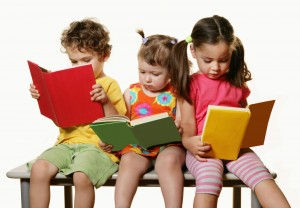8 Tips to Improve Reading in Toddlers
The gradual, ongoing process of emerging literacy begins at birth and continues through the early childhood years. It involves understanding and using language . During this period children first learn to use oral forms of language (listening and speaking) and then begin to explore written forms (reading and writing).

Sorting, matching, classifying, and sequencing materials such as beads, a box of buttons, or a set of colored cubes, contribute to children’s emerging literacy skills. Research has shown that phonemic awareness is the best predictor of early reading skills. Phonemes, the smallest units of sounds, form syllables, and words are made up of syllables. Children who understand that spoken language is made up of discrete sounds – phonemes and syllables – find it easier to learn to read.
Simple ways for parents to encourage early & emergent literacy skills in young children
Books: It is said to be the most important in creating interest in reading in a child. Having a reading corner or a bookshelf is great but having books by the coffee table, in the bedroom, in the bathroom (water-proof) and in the kitchen (recipe books) will provide more opportunities to access books for young children.
Shared reading can help children develop sound awareness and knowledge that print reflects words and vocabulary.
Writing/Scribbling space: Having surfaces, black/white boards, that are readily available for children to scribble, draw, paint and write can help them practice motor skills required for writing.
Story narration: A strong oral language foundation is one of the predictors of reading and writing. Bring the stories alive by using props, puppetry to narrate. Use gestures and facial expressions and vary the tone of your voice to keep your little one interested.
Simplify and slow down as you talk to young children. Use a variety of positive responses when your child responds, expand on their speech and make sure you show interest in what they have to say.
Make alphabet patterns with objects such as buttons, beads, small colored cubes. By putting them in a order, children gain an understanding of sequence of alphabets
Name the common objects in your house by using sticky notes. This helps child in relating the word along with the object. You can read them as in when you pass that particular object.
Alphabet crafts: You can try different types of craft activity. For example: Decorating an alphabet, coloring, Making alphabet cookies, Alphabet Pancakes.
Sight words, also known as high-frequency words, are the most common words in our written language are are often difficult to decode phonetically because they don’t follow the rules of phonics. Because of this, they must be memorized. It only utilizes the lowest level of cognitive processes. However, sight words must be memorized in order for your child to become a fluent reader.

For more ideas check out our other blogs

Comentarios